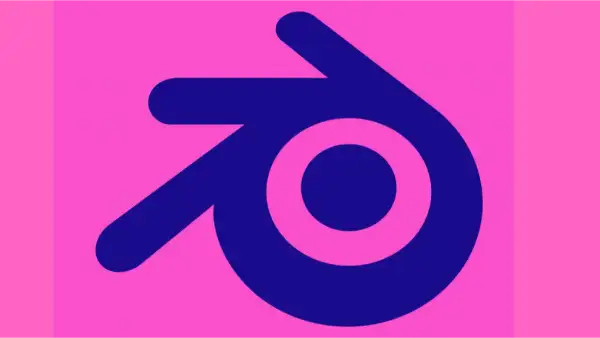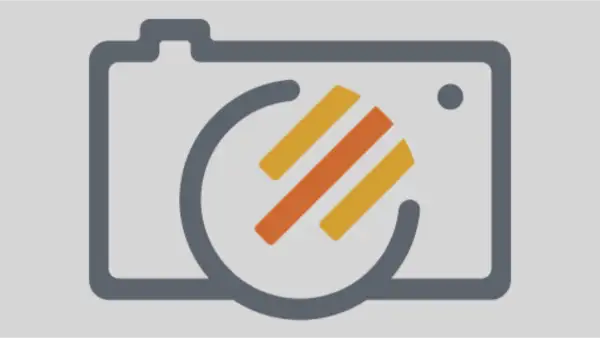Digital Asset Management Jobs

Digital asset management (DAM) involves organizing, storing, and distributing digital assets. These include images, videos, audio, documents, and other media files. DAM helps businesses and organizations manage their digital content efficiently and effectively. It ensures the quality, security, and accessibility of the content.
DAM jobs are in high demand. More and more industries rely on digital content. They use it for marketing, communication, education, and entertainment. They also use it for other purposes. DAM professionals create, maintain, and improve DAM systems and workflows. They also provide support and training to users and stakeholders.
If pursuing a career in DAM interests you, here are some possible questions and answers. They can help you prepare for your job search and interview. Click To Know About Digital Asset Management Adobe
What are the skills and qualifications required for a DAM job?

DAM jobs need a combination of technical, creative, and interpersonal skills. They also need relevant education and experience. Some of the common skills and qualifications for a DAM job are:
- Knowledge of DAM software, tools, and best practices
- Experience with digital content creation, editing, and management
- Familiarity with metadata standards, taxonomies, and ontologies
- Ability to design and put in place DAM workflows and processes
- Ability to troubleshoot and resolve DAM issues and queries
You need to communicate and collaborate with users and stakeholders. This includes people from different departments and levels.

- Ability to train and educate users and stakeholders on DAM usage and benefits
- Ability to analyze and report on DAM performance and metrics
- Ability to adapt to changing business needs and technologies
- Interest and passion for digital content and media
- The specific role and industry may need extra skills and qualifications.
- Knowledge of industry-specific standards and regulations
- Knowledge of specific digital content formats and platforms
- Knowledge of specific media production and distribution methods
- Knowledge of specific marketing and branding strategies and goals
- Knowledge of specific user and customer needs and preferences
- Knowledge of specific languages and cultures

What are the types and levels of DAM jobs?
DAM jobs can vary in scope, responsibility, and seniority. This depends on the size, structure, and nature of the organization. Some of the common types and levels of DAM jobs are:
DAM Specialist

A DAM specialist is an entry-level or mid-level role. It involves performing day-to-day tasks and operations related to DAM. This includes uploading, downloading, tagging, searching, and sharing digital assets. A DAM specialist may also provide basic support and training to users. They may also provide basic support and training to stakeholders. They may also track and report on DAM usage and issues.
DAM Analyst:
A DAM analyst is a mid-level or senior-level role. It involves analyzing and evaluating DAM data and metrics. The analyst provides insights and recommendations for DAM improvement and optimization. A DAM analyst may also research and benchmark DAM trends and best practices. They also design and put in place DAM projects and initiatives.
DAM Manager:

A DAM manager is a senior or executive-level role. The role involves overseeing and leading the overall strategy, vision, and direction of DAM within the organization.
A DAM manager may also manage and supervise a team of DAM staff. They also coordinate and collaborate with other managers and leaders across the organization. A DAM manager may also handle budgeting. They may also handle planning and reporting on DAM activities and outcomes.
What are the benefits and challenges of working in DAM?
Working in DAM can offer many benefits, such as:
- Working with diverse and dynamic digital content and media
- Working with cutting-edge and innovative technologies and tools
- Working with different and interesting users and stakeholders
- Working in a growing and evolving field and industry
- Working in a rewarding and fulfilling career
But, working in DAM can also pose some challenges, such as:
- Working with complex and large-scale DAM systems and workflows
- Working with changing and unpredictable DAM needs and demands
- Working with limited and scarce DAM resources and support
- Working with many and conflicting DAM priorities and expectations
- Working with high and constant DAM pressure and stress
How can I find and apply for a DAM job?

Finding and applying for a DAM job can be a competitive and challenging process. But, there are some steps you can take to increase your chances of success. For example:
Update your resume and cover letter to highlight your relevant skills and qualifications. This is for the DAM job you are applying for. Click Here To Know About Digital Asset Management
You should create and maintain a portfolio or showcase of your digital content and media projects. Include your achievements. Also, show your skill with DAM software and tools.
Connect with other DAM professionals and experts, potential employers, and recruiters. Use online and offline platforms and events.
Research the organization and industry you are applying for. Also, learn about their specific DAM needs and goals.
Prepare and practice for the DAM job interview. Review common DAM questions and scenarios. Also, consider your own DAM strengths and weaknesses.
Future of digital asset management.
Digital asset management (DAM) is a solution that helps streamline content processes. It reduces redundancies and ensures secure access to digital assets. A centralized repository securely stores all digital assets. The assets can be easily accessed, shared, and managed. Digital assets can include images, videos, documents, and audio files. They can also include any other type of digital content.
Several technological and business trends are likely to influence the future of digital asset management.
AI and Machine Learning Integration:
AI and ML can enhance the functionality and efficiency of DAM systems. They can enable automatic tagging, categorization, personalization, and recommendation of assets. They can also provide valuable insights into content usage and performance. They can help optimize workflows and decision-making.
Blockchain for Asset Security and Tracking:
Blockchain technology can provide a secure and transparent way to track the usage and ownership of digital assets. It can also help manage digital rights and licensing.
It ensures that we use assets appropriately and calculate accurate royalties or fees.
Cloud Computing and DAM Accessibility:
Cloud computing can improve the accessibility and scalability of DAM systems. It allows users to access, share, and manage digital assets from anywhere and at any time. It can also reduce the need for costly hardware upgrades. It provides flexible storage solutions. They can adapt to the growing volume of digital assets.
Predictive Analytics in DAM:
Predictive analytics can help predict the future needs and preferences of users and customers. It can also provide proactive suggestions and solutions. It can also help forecast the demand and supply of digital assets. It can also optimize resource allocation and budgeting.
Corporate Responsibility and Sustainability in DAM
Corporate responsibility and sustainability are becoming more important for businesses and consumers. DAM systems can help support these goals. DAM systems can help reduce the environmental impact of digital content production and consumption. For example, They do this by minimizing waste, energy use, and carbon footprint. They can also help promote social and ethical values. They ensure that digital assets are inclusive, diverse, and respectful.
These are some of the trends that I think will shape the future of digital asset management. But, there may be other factors and innovations that will emerge. They will influence the DAM landscape. The key is to stay updated and adaptable to the changing needs and expectations of the market and the customers.
Some popular DAM software.
DAM software, also called digital asset management software, helps users organize digital assets. It also helps them store and distribute digital assets. These assets include images, videos, audio, documents, and other media files. Some of the popular DAM software are:
Brandfolder:

This DAM platform is highly customizable and user-friendly. It offers advanced features such as asset conversion, resizing, templating, and clipping. It also integrates with other tools and applications to streamline workflows.
Bynder

This is a cloud-based DAM software. It provides configuration and customization options. It also has MACH-certified architecture, content filters, and recent search history.

Widen Collective:
A relationship-based DAM software that prides itself on its customer service and support. It also offers features such as asset analytics, workflow automation, and AI-powered tagging.
Canto
It is a DAM software that focuses on user and customer experience. It also focuses on simplicity and scalability. It also has features such as facial recognition, smart albums, and portals.
Nuxeo
A DAM software leverages powerful full-text and OCR search functionality. It also includes metadata management, workflow automation, and collaboration tools.
Eagle App

A DAM software that allows users to manage their assets offline, as well as online. It also has features such as drag-and-drop, batch editing, and smart folders.
LightRocket Media Manager:

This DAM software enables users to share their assets with external parties. These parties include clients, partners, and media outlets. It also has features such as watermarking, licensing, and invoicing.
These are some of the best DAM software available in the market, but there are many more to choose from. You can compare and contrast them based on your specific needs and preferences. Click To know More DAM Solutions
How do I choose the right DAM software for my business?
Choosing the right digital asset management (DAM) software for your business can be complex and challenging. There are many factors to consider, and many options to choose from. But, you can follow some general steps and guidelines. This can make the process easier and more effective. Here are some tips on how to choose the right DAM software for your business:
Identify your needs and goals. Before you start looking for DAM software, have a clear idea of what you want to achieve with it. Also, understand the main pain points and challenges with your current digital asset management. You can gather requirements from different users and stakeholders across your organization.
They may be from sales, marketing, legal, product development, and ecommerce. You can also assess your current and desired DAM maturity level. You can also check how you want to improve your digital asset strategy and performance.
Research and compare options. Once you have a list of requirements and goals, you can start researching. Compare different DAM software vendors and platforms. You can use online resources to learn more about the features, benefits, and drawbacks of each option. Such resources include web search results, reviews, case studies, and demos.
You can also contact and communicate with vendors directly. Ask them specific questions about their products and services. You can use a scorecard or a matrix to check and rank each option based on your criteria and priorities.
Test and select the best fit. After you have narrowed down your options to a few finalists, you can test and select the best fit for your business. You can request a free trial or a demo from the vendors, and use their software with your own data and workflows. You can also involve your users and stakeholders in the testing process. Get their feedback and opinions. You can then compare the results and experiences of each option. Select the one that best fits your needs, goals, budget, and timeline.
Frequently Asked Questions ?
What does a digital asset manager do?
A digital asset manager is a person or software that manages digital assets. Digital assets include photos, videos, audio, documents, and other files. A digital asset manager stores, organizes, catalogs, and distributes digital assets. They must do so in a secure and efficient way. A digital asset manager may also use artificial intelligence, machine learning, and blockchain to enhance the functionality and value of digital assets.
How to get a job in digital asset management?
To get a job in digital asset management, you need a mix of technical, analytical, and personal skills. A digital asset manager needs skills in metadata management and taxonomy creation. Also, they should be proficient in DAM tools and know content management systems. They also need project management, communication, and problem-solving skills. You also need relevant education. You also need experience in digital asset management or a related area. This includes information science, computer science, or digital media.
What does a job in asset management do?
A job in asset management involves monitoring, selling, and buying investments. It’s for an individual client or a business. Asset managers help their clients achieve their financial goals. They do this by creating and managing portfolios of assets. These assets include stocks, bonds, real estate, and commodities. Asset managers conduct research, analysis, and risk assessment. They do this to identify the best investment opportunities and strategies for their clients.Asset managers may work independently. They may also work for an asset management firm, a bank, or another financial institution.
What is the future of digital asset management?
In the future, digital asset management will likely be more advanced. It will also be more integrated and user-centric. We expect some trends to shape the future of digital asset management. These trends include cloud computing, artificial intelligence, and machine learning. Additionally, blockchain, predictive analytics, and personalization are also trends. These technologies will enable digital asset managers to provide more accessible, secure solutions for their clients and users. They will also enable managers to offer customized solutions.
What are 3 types of assets?
There are three main types of assets. They are tangible assets, intangible assets, and financial assets. Tangible assets have a physical form. You can see and touch things like land, buildings, machinery, and vehicles. Intangible assets do not have a physical form. They have value based on their intellectual or legal rights. This includes patents, trademarks, and goodwill. Financial assets represent a claim to a future payment or benefit. Examples include cash, stocks, bonds, and derivatives.
Is asset management a good job?
Asset management can be a good job for people interested in finance and investing. It also allows them to help others achieve their financial goals. Asset management can offer a challenging, rewarding, and prestigious career path. This is for those who have the skills, knowledge, and passion for the field. Asset management can also provide opportunities for learning, growth, and advancement. It also offers competitive compensation and benefits. But, asset management can also be demanding, stressful, and competitive. It requires long hours, high expectations, and constant adaptation to changing market conditions
